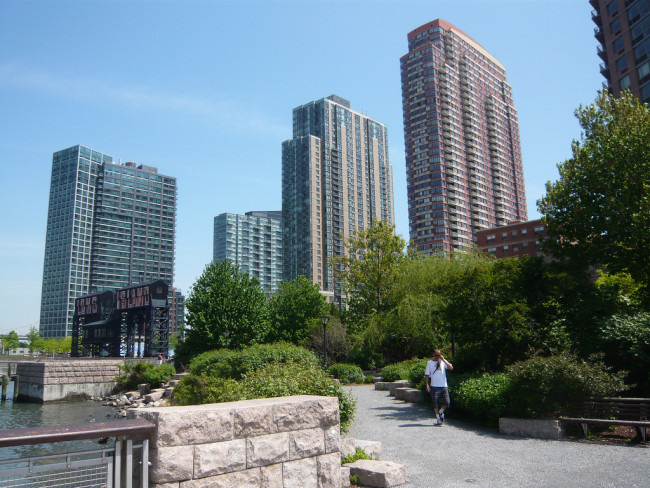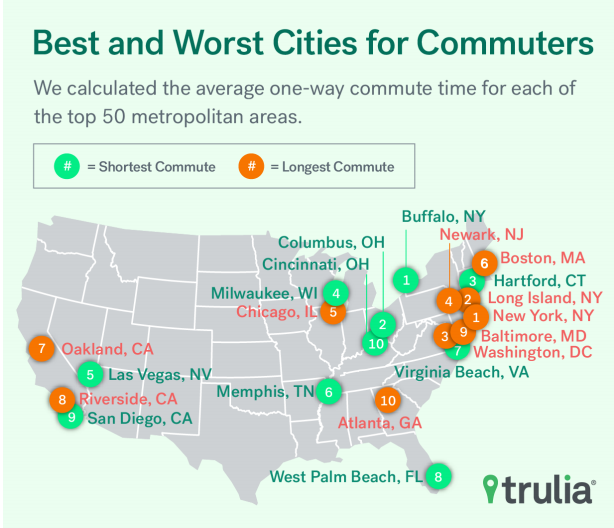Who is the "average" New Yorker?
NYC often feels like a city of extremes. Last May, for instance, a Central Park South condo went on the market for $250 million—the most expensive ever—and in the same year, a record-breaking number of homeless New Yorkers died.
Much attention is paid to the people at either end of these extremes, those with inconceivable wealth and those on the brink of survival. But the vast majority of New Yorkers dwell somewhere in between, and this week, we’re focusing on them, and their most pressing concerns about city life.
But first, we need to define who the so-called “average” New Yorker is. To do so, we dove into several data sources to find out what “typical” means in this most atypical of cities.
Demographics
The Weissman Center for International Business at Baruch College runs NYCData, which uses stats from the U.S. Census to paint a numeric portrait of the city. And according to the numbers, the most “typical” New Yorker very well might be a white, native-born woman, between 25 and 29 years old, living in Brooklyn. She might be working in the health care industry, for an average of 49 hours a week, and usually spends 34.8 minutes commuting to and from her job each day.
Of course, what can be considered average is far more complex than that, with significant variances by borough and neighborhood. Women do outnumber men citywide (4.4 million females to 4 million males) and in each borough, as well, so if you’re a straight woman seeking a partner, you’re right to suspect that the pickings are a bit slim.
Twenty-five to 29-year-olds represent the highest percentage—9.4—of New Yorkers citywide, and in Manhattan it’s even higher, at 12.1 percent. Interestingly, this age range is the biggest demographic in all boroughs except Staten Island, where 50 to 54-year-olds are the largest cohort, at 7.5 percent of the population. Chalk this up, perhaps, to S.I.’s more suburban lifestyle attracting an older group.
And as for why there’s a smaller percentage of the next age group, 30 to 34-year-olds, relative to 25 to 29-year-olds in each borough, we’d hazard a guess that it has to do with that classic life transition: Starting a family and decamping for the suburbs.
When it comes to race, New Yorkers who consider themselves white are in the majority (2.7 million), but only slightly; there are 2.46 million New Yorkers identifying as Latino, 1.9 million as black, and 1.19 million as Asian; 157,832 New Yorkers checked “other.”
And while native-born New Yorkers (5.3 million) outnumber those born overseas, according to a report from the office of city comptroller Scott Stringer, NYC is home to 3.3 million immigrants from over 150 countries. The largest number of New York’s immigrants, per NYCData, hail from Latin America, followed by Asia. When it comes to individual countries, the Dominican Republic is the most well-represented, followed by China.
Queens emerges as the most international borough, with the largest foreign-born population—no wonder the 7 train has been dubbed the “International Express.” And NYC’s linguistic diversity is staggering: After Spanish, the most-commonly spoken foreign tongue, languages ranging from Yiddish to Korean to Arabic each have over 50,000 speakers living here.
In 2014, Business Insider published a map of the most common non-English, non-Spanish foreign language by neighborhood, revealing, for example, that you should head to the South Bronx if you’re curious about Igbo and to the Rockaways if you want to hear Amharic. So demographically speaking, even if you’re not “average” as far as your age, sex, ethnic background, or spoken language, you’re certainly far from alone.
Housing and income
Unlike the rest of the United States, where it’s more likely that the average American owns than rents, New York is very much dominated by renters. According to NYCData, renter-occupied units significantly outnumber owner-occupied ones: 2.14 million to 989,902.
A Naked Apartments study of the city’s housing supply found that the average New York renter is probably a Brooklynite: Not only is the borough the most populous, it also has the greatest number of rental units (662,615).
Brooklyn may not remain the top choice of young NYC renters for long, though. Jeffrey Schneider of Gotham Brokerage (fyi, a Brick sponsor), says that anecdotally, the firm’s “average” client has been forced by rising prices to move from Manhattan to Brooklyn and now to Queens. (A new report from SpareRoom backs up Queens’ rising popularity.)
“Within each borough, the ‘center’ also keeps moving, too,” Schneider says. “The new neighborhoods are the ones you hear about in the gentrification controversies.”
If you feel like you’re on a never-ending quest for affordable housing, this, too, makes you an average New Yorker. Douglas Elliman’s market reports for the fourth quarter of 2016 found that the median Manhattan apartment rents for $3,388 a month; in Brooklyn, it’s $2,700, and in Queens, $2,850.
Median income, meanwhile, per Data USA, is $75,575 in Manhattan, $51,141 in Brooklyn and $60,422 in Queens—none of which add up to 40 times the monthly rent, a metric that landlords typically use to determine whether or not to accept prospective renters.
The typical renter—surprise, surprise—is also spending a high proportion of their income on housing. Brick reported last year that the average New Yorker devotes 65.2 percent of their take home pay to rent. (No wonder that Jake Dobkin, in his "Ask a Native New Yorker" column for Gothamist, writes that you're never too old to have a roommate when you live in NYC.)
And the everyday New Yorker’s situation is rendered even more precarious by the likelihood that they don’t have renter’s insurance to protect their homes and their belongings in case of an emergency.
“It is these people, often on very tight budgets, who don't want to bother with the ‘unnecessary’ expense of insurance,” Schneider says. “But they are usually unaware that it is very affordable and can really save you financially if you have a fire or water damage claim that wrecks your stuff and leaves you without a place to stay.”
Work
It likely comes as no surprise that the average New Yorker spends a sizeable chunk of time both at their jobs and in transit to reach those jobs--considerably more, in fact, than the average American. Last year, Crain's reported that NYC employees spend an average of 49 hours per week working and commuting to work, longer than residents of other large cities like San Francisco, Washington, D.C., and Houston.
And while workers in SF spend more hours actually on the job, the total work time is lengthier for New Yorkers because of their journeys there and back. Here at Brick, we previously wrote about how NYC residents face the longest commute times in the country, at 34.8 minutes each way.
So what is the typical New Yorker doing once she reaches her place of employment? NYCData reveals that the industry with the largest number of employees is "health care and social assistance," with 647,291 workers. The average salary for this industry is $48,935—again, not nearly enough to meet the usual 40-times-the-monthly-rent marker most landlords want to see before taking on a tenant, suggesting the average New Yorker is not just working and commuting long hours, but also barely scraping by for her efforts.
Why does the average New Yorker live here?
So if the average New Yorker is spending most of her time at work or on the train getting there, all for compensation that barely allows her to pay the exorbitant rent, why does she put up with the struggle? It's a question The Onion pointed out to hilarious effect in their article, "8.4 Million New Yorkers Suddenly Realize New York City a Horrible Place to Live." (Sample quote: "I don't need to pay $2,000 a month to share a doghouse-sized apartment with some random Craigslist dipshit to prove my worth. I want to live like a goddamn human being.")
The reasons are likely as varied as NYC's population. In Forbes, Brian Rashid writes of a "magic moment" stepping off a train at Grand Central when he realized he had to live here; he refers to the city as "the world's best teacher."
Writer Meghan Daum, who abandoned the city once only to return years later, tells of her love for "the garrulousness of the citizens, the way conversations with strangers can strike up as easily as flicking a lighter and then extinguish themselves just as fast (not that anyone carries lighters anymore)."
And in Gothamist, Jen Carlson offers six reasons why New Yorkers put up with, well, everything, including access to culture, mass transit, and the particular charm of 24/7 bodegas.
Speaking of which, a recent strike of bodega owners who were protesting the Trump administration's travel ban seems to have reminded many New Yorkers of what makes the city so special.
have you ever seen a more new york sign in your whole life
— Rachel H. Smith (@rachelholliday) February 2, 2017
via @MotionToStrike (https://t.co/oKAGaw2ufN) #bodegastrike pic.twitter.com/Lf4qVFwUz7
NYC is crowded, expensive, and often punishing, but at times, it seems, a sense of solidarity emerges among its 8 million citizens. It's a feeling that will never be quantified, no matter how much number crunching we do.
You Might Also Like































